
The 101st Airborne Division (Air Assault) ("Screaming Eagles") is an air assault infantry division of the United States Army that specializes in air assault operations. It can plan, coordinate, and execute battalion-sized air assault operations to seize terrain. These operations can be conducted by mobile teams covering large distances, fighting behind enemy lines, and working in austere environments with limited or degraded infrastructure. It was active in, for example, foreign internal defense and counterterrorism operations in Iraq, in Afghanistan in 2015–2016, and in Syria, as part of Operation Inherent Resolve in 2018–2021.
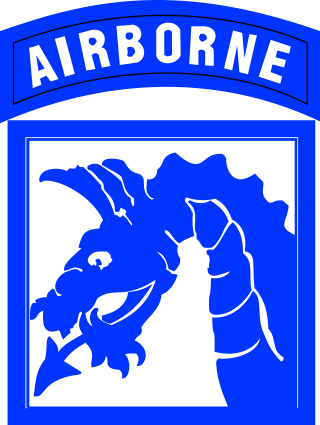
The XVIII Airborne Corps is a corps of the United States Army that has been in existence since 1942 and saw extensive service during World War II. The corps is designed for rapid deployment anywhere in the world and is referred to as "America's Contingency Corps." Its headquarters are at Fort Liberty, North Carolina.

Major General William Carey Lee was a senior United States Army officer who fought in World War I and World War II, during which he commanded the 101st Airborne Division, nicknamed the "Screaming Eagles". Lee is often referred to as the "Father of the U.S. Airborne".

The United States Army Forces Command (FORSCOM) is the largest United States Army command. It provides expeditionary, regionally engaged, campaign-capable land forces to combatant commanders. Headquartered at Fort Liberty, North Carolina, FORSCOM consists of more than 750,000 active Army, U.S. Army Reserve, and Army National Guard soldiers. FORSCOM was created on 1 July 1973 from the former Continental Army Command (CONARC), who in turn supplanted Army Field Forces and Army Ground Forces.
The United States Army Regimental System (USARS) is an organizational and classification system used by the United States Army. It was established in 1981 to replace the Combat Arms Regimental System (CARS) to provide each soldier with continuous identification with a single regiment, and to increase a soldier's probability of serving recurring assignments with their regiment. The USARS was intended to enhance combat effectiveness by providing the opportunity for a regimental affiliation, thus obtaining some of the benefits of the traditional regimental system.

In the United States (US) military, a beret flash is a shield-shaped embroidered cloth that is typically 2.25 in (5.72 cm) tall and 1.875 in (4.76 cm) wide with a semi–circular base that is attached to a stiffener backing of a military beret. These flashes—a British English word for a colorful cloth patch attached to military headgear—are worn over the left eye with the excess cloth of the beret shaped, folded, and pulled over the right ear giving it a distinctive appearance.

Daniel P. Bolger is an American author, historian, and retired a lieutenant general of the United States Army. He held a special faculty appointment in the Department of History at North Carolina State University, where he taught military history until his retirement in 2023.
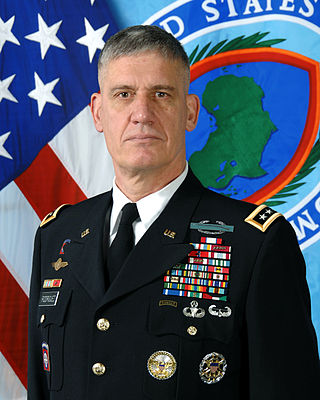
David Mitchell "Rod" Rodriguez is an American Army four-star general who served as the Commander of the United States Africa Command from April 2013 till August 2016.
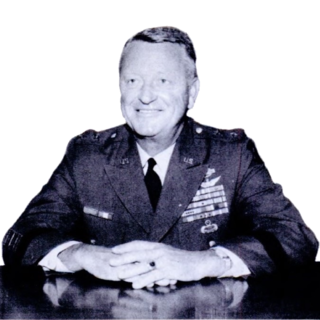
John J. Tolson III was a lieutenant general in the United States Army. During the Vietnam War, he helped implement the airmobile concept use of helicopters in combat with the 1st Cavalry Division (Airmobile). Tolson credited the U.S Marines for first using helicopters to transport troops into combat in the Korean War, making the ground fight a three-dimensional war, thus freeing troops from the tyranny of terrain.

John Francis Campbell is a retired United States Army general who was commander of the Resolute Support Mission and United States Forces – Afghanistan. He was the 16th and last commander of the International Security Assistance Force. Prior to this, he served as the 34th Vice Chief of Staff of the United States Army. He is currently a member of the board of directors of IAP, and BAE Systems, and serves on the advisory board of Code of Support Foundation.

Frederick Benjamin "Ben" Hodges III is a retired United States Army officer who served as commanding general, United States Army Europe. He has been Senior Advisor to Human Rights First since June 2022 and also serves as NATO Senior Mentor for Logistics. He previously held the Pershing Chair in Strategic Studies at the Center for European Policy Analysis.

James Charles McConville is a retired United States Army general who served as the 40th chief of staff of the Army from 2019 to 2023. He previously served as the 36th vice chief of staff of the Army from 2017 to 2019. Prior to that, he served as the Army's Deputy Chief of Staff for Personnel (G1).
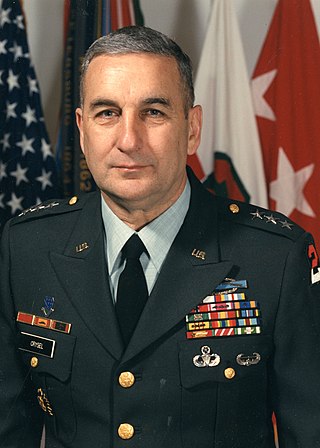
James W. Crysel is a retired United States Army officer who attained the rank of lieutenant general. He was notable for his command of Second United States Army and the 25th Infantry Division.

James Edward Thompson Jr. was a United States Army officer. He attained the rank of lieutenant general and was a commander of the 101st Airborne Division and First United States Army.

Major General Kurt J. Ryan is a retired General Officer from the United States Army and was the 20th Commanding General of the United States Army Surface Deployment and Distribution Command. Previously, he served as the 39th Chief of Ordnance for the U.S. Army Ordnance Corps and Commandant of the United States Army Ordnance School at Fort Lee, Virginia. Major General Ryan served as the Deputy Chief of Staff, G-4 (Logistics) for U.S. Army Forces Command, Fort Bragg, North Carolina from March 2018 to June 2021.

Laura Jane Richardson is a four-star general in the United States Army who is the commander of United States Southern Command since 29 October 2021. Prior to that, she was the commanding general of United States Army North from July 2019 to September 2021.
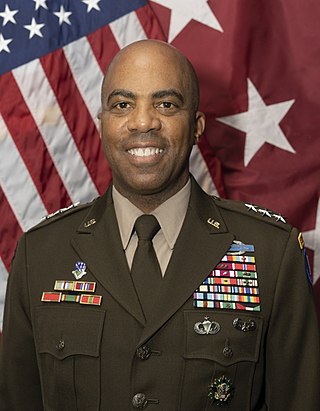
Ronald Patrick "Ron" Clark a United States Army lieutenant general who serves as the senior military assistant to the secretary of defense. He previously commanded United States Army Central from 2021 to 2022. He also served as Chief of Staff, United States Indo-Pacific Command. He previously served as the commander of the 25th Infantry Division, and, before that, as Chief of Staff, United States Army Pacific.

Joseph Patrick McGee is a United States Army lieutenant general who serves as the director for strategy, plans, and policy of the Joint Staff. He also served as the commanding general of the 101st Airborne Division and Fort Campbell from 2021 to 2023.

Samuel Emanuel Ebbesen is a lieutenant general in the United States Army who served as Deputy Assistant Secretary of Defense for Military Personnel Policy.
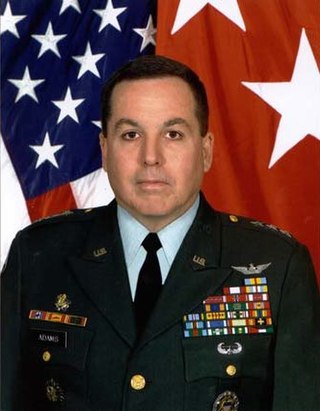
Ronald Emerson Adams is a retired lieutenant general of the United States Army who served as commander of the Stabilisation Force in Bosnia and Herzegovina from October 1999 to September 2000. He previously served as commanding general of the United States Army Aviation Center from July 1994 to September 1996.



















